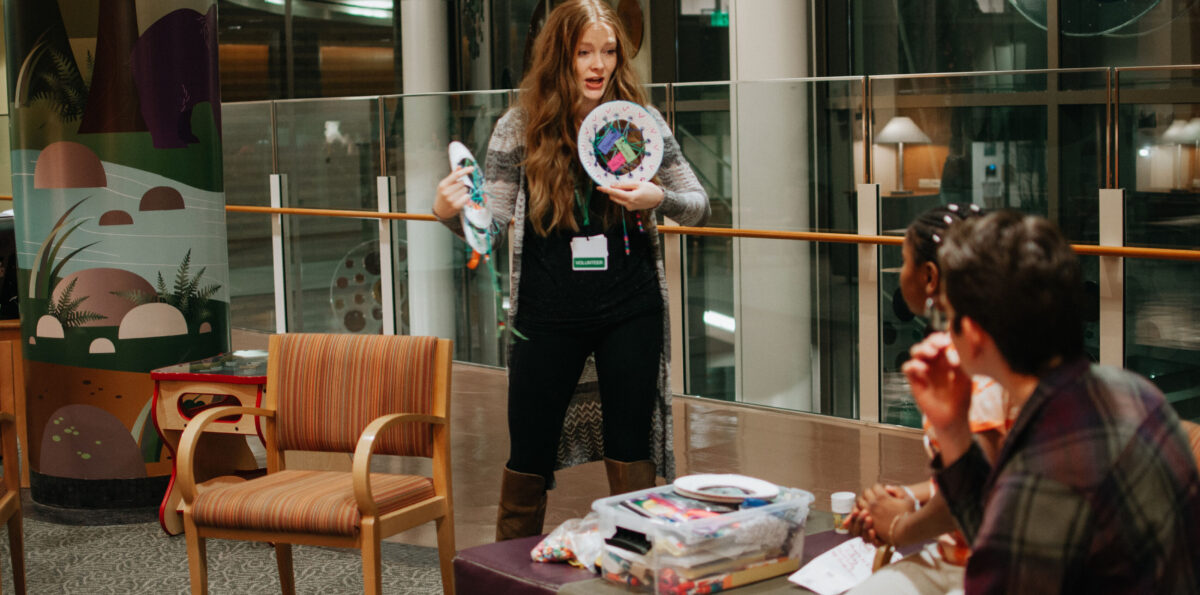Mary Bridge Children’s bereavement program offers tips for families navigating grief

According to a peer-reviewed study (set to be published in the medical journal Pediatrics) analyzing data from April 1, 2020, through June 30, 2021, more than 140,000 children in the United States have lost a parent or grandparent to COVID-19. In Washington state, researchers estimate more than 1,400 children have suffered similar losses.
Losing a loved one is hard for anyone but navigating grief as a child or a parent can be especially difficult during this time. To help navigate the grief process, the donor-funded Bridges Center for Grieving Children program provides services and monthly bereavement support groups for children ages 4 to 18 at no cost to families.
Since 1988, Bridges has served over 7,000 children from more than 4,200 families, helping them process, cope and heal through bimonthly peer support groups.
“The structure of Bridges is so wonderful, as families can stay with us as long as it’s helpful to them,” Lisa Duke, Bridges program coordinator, says. “I get the joy of watching kids work through some really tough stuff and be able to put words to feeling and doing better.”
Lisa and her Bridges colleagues have put together the following resources for helping children facing grief:
How to talk to children about grief
- Be open and honest with your feelings. Talk about your feelings with your child and encourage them to share their feelings with you. It’s OK to say you don’t know the answer to every question.
- Use simple words like “die” and “death.” Young children are very literal and will tell you to go find someone that is “lost.” Use the name of the person who died when referring to them.
- Be honest with your child. If your child asks whether you’ll die someday, respond truthfully. A sample response is, “Everybody dies someday, but I hope to live to do things with our family for a long time.”
- Help your child remember the deceased person. Talk about events, such as vacations and activities, that your child experienced with the person who has passed.
Activities for exploring grief with kids
- Read children’s books related to grief and loss with your child and discuss them together. Read books yourself on helping children through grief.
- Encourage your child to ask questions and respond honestly at a level they’ll understand.
- Set realistic goals with children concerning their behavior, school performance and homework. Recognize that grief may make it difficult for your child to concentrate, and at times, they may be distracted and unable to function.
- Create a plan with your child’s school counselor and teacher for when they feel overwhelmed. Consider including a special signal that alerts the teacher when your child may need to take a break. Discuss how your child will reenter their school routine.
- Be generous with hugs and gentle, supportive touch. This gives the child a sense of security and support.
Things to keep in mind
- Allow your child to fully experience their grief. Grief is a normal and natural reaction to loss.
- Children often struggle with long periods of sadness. This often means that they’ll want to participate in their usual activities, even on the day of the funeral. This doesn’t mean that children don’t care or are being disrespectful. Instead, it’s a normal, healthy and developmentally appropriate response.
- Young children are often unable to understand the finality of death. As a result, they may repeatedly ask you to tell them the “story” of the death. It means that the child is working on their grief.
- Your child may revisit their feelings of loss as they grow, develop and mature in their ability to understand.
- You are your child’s primary role model. How you connect with your grief will help your children learn to express theirs.
For more information about Bridges Center for Grieving Children, call 253-403-1966.
If you’d like to support this program, you can make a gift today at Mary Bridge Children’s Foundation.